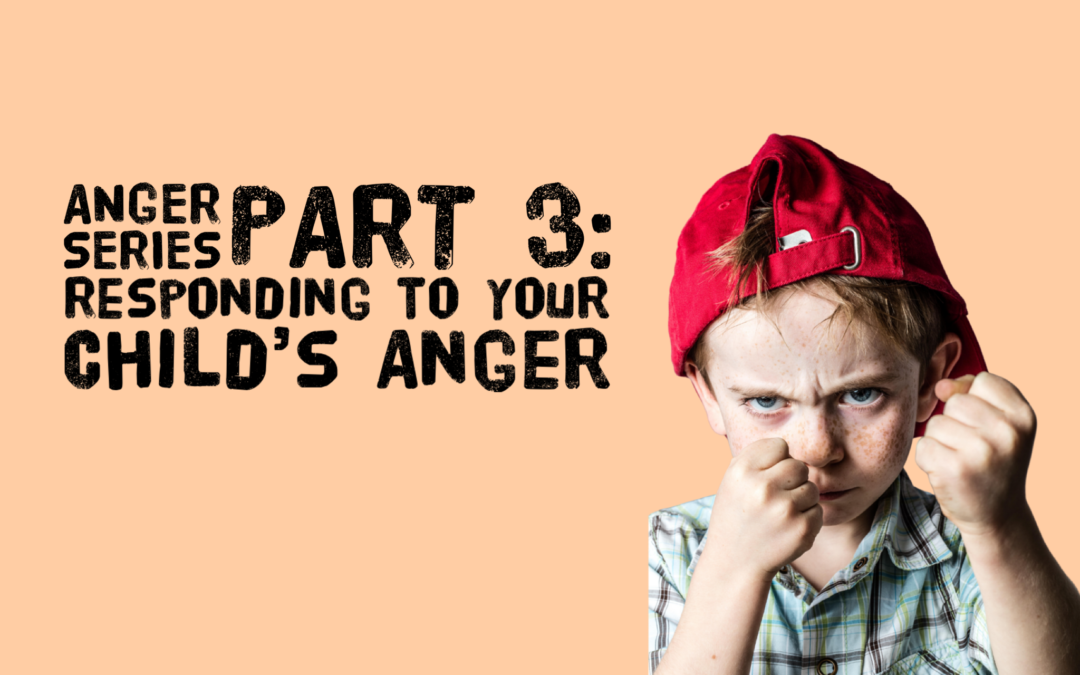Think back to the last time you lost your sh*t. Was it with your partner? Your sibling? Your coworker? Your kid? Pull this memory up into your mind, as vividly as you can now.
Remember the adrenaline coursing through your body. The thoughts spinning around in your head. The heat building internally, perhaps leading you to break out in a sweat. The racing heart, the tension in your muscles, the churning in your stomach.
In that moment, how capable were you of pulling yourself back? Or perhaps that was the pulled back version?
Now think about how others responded to you in that moment. Did they help? Or just added to your fury?
Imagine that in that moment that someone, with the stated objective of helping you, came up to you and swatted you on the butt. Or screamed in your face. Or lectured you and insisted that you should know better.
When you put yourself in any of these scenarios, how do you think you would have felt? And how would you have responded?
******
Now think back to a time when you were mad as hell, but someone managed to help you calm down.

What was it that person did to help you? Did they give you a hug? Validate your feelings? Give you a reassuring look? DId they check in and ask you what was going on? Did they listen? Did they give you the space you needed?
When we as adults get mad, the last thing we need is to be yelled at, scolded, or physically hurt. Because not only will it not help, it will just contribute to even further anger. So how is it that we’ve convinced ourselves this is the best way to respond to our children’s anger?
KIDS DON’T WANT TO FEEL ANGRY
As with adults, kids really don’t want to feel angry. Anger isn’t the goal, it’s the messenger. It’s the warning system that alerts us to something happening that isn’t right. It’s what propels us to intervene when we are not feeling good.
Anger is often a secondary emotion, with other feelings lurking just behind it. Underneath our anger might be feelings of hurt, rejection, loneliness, embarrassment, sadness, or insecurity. It might be the face of deeper feelings of shame, regret, betrayal, or fear. It can show up in place of feelings such as anxiety, overwhelm, and even jealousy. There are a lot of feelings that can lead people to respond in anger.
While anger often gets condemned as a nuisance, it is important and integral to our survival. We need the force of anger to motivate us to take care of ourselves and the things and people we care about. Anger is often a driving force behind activism, and it helps us identify vulnerabilities that need tending.
RESPONDING TO YOUR CHILD’S ANGER
Ok, so we know why kids feel angry, and we know what responses don’t work, so now let’s dive into what can actually help you to help your angry child.
1. Take a moment for yourself
Before you do anything else, take a moment to regulate your own self before you dive into the hot zone with your child. Our bodies are biologically wired to experience stress in response to other people’s anger (it’s one form of self-protection), so taking a moment to add in some deep breathing and positive self talk can help reduce whatever stress level we are beginning at, so we have more room to take on those angry feelings without becoming overwhelmed ourselves. Here are a few suggestions to help you start out well:
- Close your eyes and take 5 deep breaths
- Count backwards from 10
- Say to yourself “I’ve got this”
- Tightly squeeze all the muscles in your body and then let them all relax
- Notice how you feel in your own body and label those sensations

Depending on the situation at hand, some days you will have more time for this and some days you will have less, but even taking one deep breath before running interference can help. And even if time is not available to you, pay close attention to the commentary running through your head. If you’re going into the moment saying to yourself, “Oh dear God, what now,” or “Are you freaking kidding me?” or “What is WRONG with her?!” this is going to greatly reduce your ability to help, and make it more likely that your response will actually exacerbate the problem.
If you notice those thoughts running through your head, try adding in a more helpful phrase instead, such as “my child needs me,” or “OK, lets go figure this out.” No one says you need to be overjoyed to work through anyone’s anger with them, but finding more helpful self-talk is going to make it so much easier on all involved.
2. Get down to their eye level
No matter what size we are, having someone tower over us when we’re upset can be perceived as threatening and unconsciously add to our stress. So when you first approach your child, take that layer of added stress away by crouching down to their eye level. Not only does this reduce stress, but it increases the opportunity for connection through eye contact.
3. Label their feeling
Sometimes the mere act of feeling understood by another can reduce the intensity of our feelings by half. This can be done by asking your child what they’re feeling and listening intently as they convey their emotions. Or, for those children who may not be very familiar with their feelings, it can start by you labeling the feeling for them. Here are some ways of doing this:
- It looks like you’re feeling mad
- I can see you’re angry
- I can see that something is really frustrating you right now
- I’m wondering if you’re feeling mad
Most of the time, this labeling will be appreciated by your child. They will often respond with a “Yes, because…” and dive into all the things that are contributing to that feeling. Your job is to listen as they let all of those feelings out, because this is one important way of helping them release those feelings and move on.
If your child corrects you and names a different emotion, go with it. It’s their body, they know best. But if they are new to the world of feelings, they may just broadly reject all feelings, perhaps believing it is bad or shameful to have feelings. While you will want to help them correct this inaccurate perception of emotions eventually, now is not the time. So just allow them to agree or disagree.
4. Regulate emotions
This one is so important! No one can be productive or thoughtful when they are fired up. We all need to calm our bodies enough so that the part of our brain that thinks logically and rationally can come back online. Different people benefit from different strategies to regulate themselves, so this one might require some trial and error to see what works for your child. And some children will be very vocal up front about what they will and will not do, so this will also help guide you to the response that will be most helpful for them at that moment (keeping in mind that the strategy that helped yesterday may not be the one that helps today).
- Offer affection
- Allow them to talk about the problem
- Encourage crying
- Provide space to cool down alone
- Engage in deep breathing together
- Distract through another activity
- Do something silly together

If you were to prioritize any of these strategies out of the list, I would recommend affection, because affection has this incomparable power in melting stress and building feelings of connection. When you provide your child with a hug you communicate strong messages of love, support, togetherness, and empathy. And the closeness allows you to use your own body to help regulate theirs through your deep breaths, gentle movements, slower heart rate, and soft speech. All of these serve as cues to their body that they are safe, and this allows them to find calm again.
Although this is by far the most potent tool in your toolbox, some people just require space to calm their bodies. If this is your child, you can direct them to safe places they can go to calm down. I strongly recommend refraining from using terms such as “time out,” as this carries a very negative and punitive connotation, whereas the goal here is to build the skill of regulating emotions.
5. Problem solve
Once your child is calm again, you can come back to the problem at hand. If you don’t yet know what triggered your child’s anger, this is the time to explore further, as their bodies are now regulated enough that their rational brain is back in action. The key to success in this step is to approach the problem with curiosity, rather than frustration.
If your child senses a tone of anger in your voice, it’s likely going to send them back into a state of dysregulation, and will prevent you from solving any problems.
So ask questions sensitively. Inquire about what happened, what they were trying to do that didn’t work, or how they felt. Validate their feelings whenever you can by saying things such as “I can understand that made you mad, I would be mad too.”
If the problem is still relevant, engage your child in discussion of ideas of ways to solve the problem. If the problem is over, you can instead talk about ways your child can try handling it in the future. This is where you give your child the goods of alternative, more adaptive ways to approach tough situations that hopefully prevent future meltdowns.
And that’s it. It’s simple in theory, but heightened emotions can make working through anger tough for many of us. So remember there will be no perfect response, but repetition will help make it easier. And your efforts towards helping your child cope with their anger now will help them effectively manage this emotion for their lifetime.
QUICK LINKS:
Anger Series Part 1: Identifying and Preventing Triggers
Anger Series Part 2: Building Your Child’s Emotional IQ
____
Dana Basu, PsyD is a licensed clinical psychologist at EverGROW therapy and founder of Everything But Crazy, an online resource for parents. She provides individual therapy, support groups, and online resources for parents in Orange County and throughout the state of California via online therapy. She specializes in working with the highly sensitive person and people with difficult childhood experiences, trauma, parenting stress, and chronic guilt.

